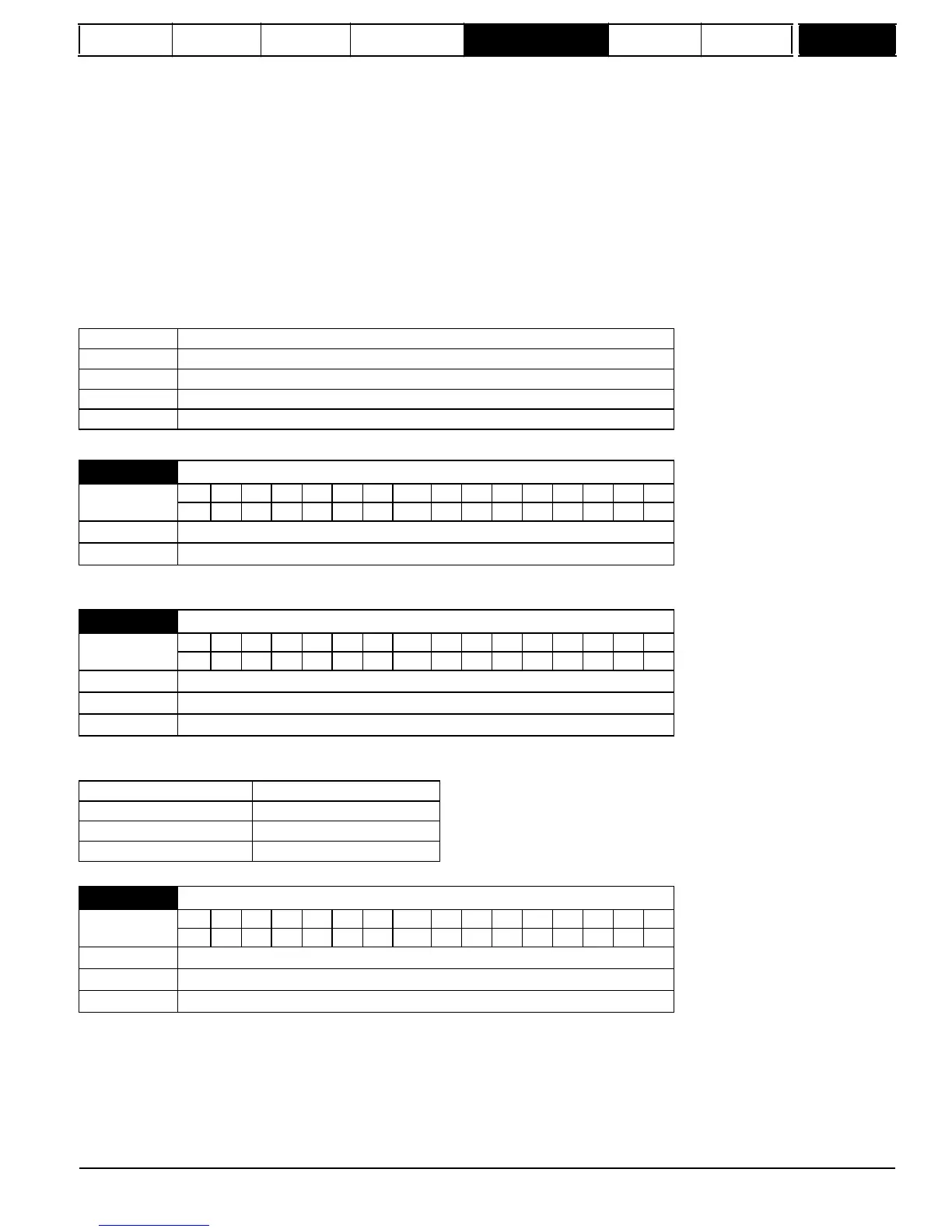Parameter
structure
Keypad and
format
Advanced
parameter
descriptions
Serial comms
At some point, one of the Mentor 2 drives is replaced with a Mentor MP drive. The EIA (RS) -485 cable is wired to an SM-Applications module in slot
3 of the Mentor MP instead of being wired into the drive.
If the ANSI master device attempts to read Pr
2.06
(intending to read Mentor 2 Pr
2.06
) the SM-Applications module will read Mentor MP Pr
2.06
giving an unexpected result to the ANSI master.
If Pr
11.59
on the Mentor MP is set to 3 (to enable Mentor 2 emulation for the installed SM-Applications Plus module) the SM-Applications Plus
module will treat incoming serial parameter reads for ANSI, ASCII and RTU modes as being in “Mentor 2” format.
In this example the SM-Applications module will receive the command to read Mentor 2 Pr
2.06
and will perform an equivalent parameter read (in this
case it will read Mentor MP Pr
2.25
, divide the value by 100 and return the result).
In this way the master device does not need to be modified to consider a Mentor MP on the communications network. The SM-Applications Plus
documentation includes a list of the conversions provided.
Note that the SM-Applications Plus module does not provide a conversion for every Mentor 2 parameter
The user program in the SM-Applications Plus module, allows the user to create their own conversion functions if required, either to extend the set of
parameters which can be converted, or to override one of the conversions which are provided.
Pr
11.60
. The setting of this parameter is used in determining the thermal filter of the external discharge resistor installed. It is assumed that the
temperature will fall by 99 % in this time, and so the filter is Pr
11.60
/ 5. If either Pr
11.60
or Pr
11.61
are set to their default values, the software
assumes that only the internal discharge resistance is being used.
The external discharge resistor temperature is modelled by the drive as shown below and displayed as a percentage in Pr
11.63
. The temperature
rises in proportion to the power flowing into the resistor and falls in proportion to the difference between the resistor temperature and ambient. The
same model is used to determine the temperature of the internal discharge resistors.
Mentor MP Advanced User Guide
157
Issue Number: 4
www.onxcontrol.com
11.62
